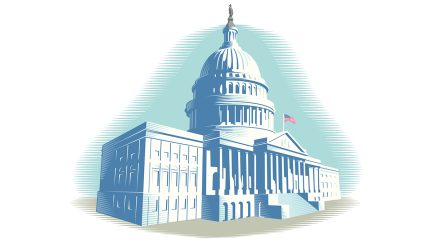Never miss a story — sign up for PLANADVISER newsletters to keep up on the latest retirement plan adviser news.
403(b) Retirement Plan Exchanges
Brodie Wood, SVP of healthcare, education and not-for-profit markets at Transamerica Retirement Solutions, discussed the efficiencies and benefits a closed MEP can offer not-for-profit 403(b) plans.
In a case of perfect timing, Transamerica announced it is now offering its first-ever 403(b) multiple employer plan (MEP) for higher education, created in partnership with the Wisconsin Association of Independent Colleges and Universities (WAICU), on the same day Brodie Wood, SVP of healthcare, education and not-for-profit markets at Transamerica Retirement Solutions, spoke to attendees of the Plan Sponsor Council of America (PSCA) 71st Annual National Conference about for 403(b) plans.
A month ago, 14 Virginia private colleges, members of the Council of Independent Colleges in Virginia (CICV) announced plans to join a newly created MEP.
Wood noted that closed MEPs have been used in the for-profit market for a number of years. However, he said that not-for-profits tend to be less competitive and have realized that by pooling assets together, they may be able to offer a better solutions.
According to Wood, the efficiencies MEPs provide to 403(b) plans include:
- Use of independent, renowned professionals;
- Complete transparency and objectivity;
- Reduce administrative burden;
- Economies of scale; and
- De-risk plans, i.e. balances complexity of choice with scale; ensures payroll data is clean; provides consistent communication to adopting members and participants; maintains one fund menu of independently selected/managed fund (no conflicts); and delegates authority to mitigate risk.
Other benefits include access to more investment choices, access to enhanced benefits at lower cost, reduction of fiduciary exposure, one Form 5500, no audit and strong participant education support, Wood said.
For associations, such as the WAICU, there are also benefits, Wood noted. “Associations are looking for a way to become relevant for members, recruit new members, retain existing members, de-risk plan operations and build a market of skilled employees,” he said.
There are options for reducing fiduciary exposure or sharing exposure. For example, Wood said the Virginia plan pulled in a 3(16) plan administrator. But, he pointed out, “The challenge in the not-for-profit market is there are not a lot of providers that have both the expertise in MEPs and not-for-profit retirement plans.”
Wood said there is also a lot of value in payroll aggregation; some MEPs may want to hire a payroll provider or aggregator. He said the Wisconsin plan is manageable by Transamerica but it would get more complicated with bigger entities and/or with those with multiple payrolls.
As far as pricing, 403(b) MEPs could have mega plans and small plans, so consideration of costs for each member should be given. Transamerica uses break-point pricing.
Wood said individual schools struggle to offer participant education, and a provider or adviser to an MEP plan can customize education for different members, or the plan could establish a comprehensive communication package members can use. He noted that the Virginia plan engages a third party for education and advice.
MEPs help 403(b) plans pare down investment options, but for plan participants who may complain about losing choices, the plan could offer a brokerage window. Transamerica’s plan offers a brokerage window.
Wood said to establish an MEP, there are three main steps:
- Retain Employee Retirement Income Security Act (ERISA) counsel to establish the legal framework and governance; to establish a formal committee (A charter will define how the committee is established. Wood said it would be ideal to have a representative from all members of the MEP.); and to discuss the plan document (Wisconsin is using Transamerica’s volume submitter pre-approved 403(b) plan, which is one plan document, but each member can have a different participation agreement to offer different features, such as vesting schedules, eligibility criteria or other features.)
- Retain a 3(38) investment fiduciary to assist in searches for administration and recordkeeping providers, establish investment criteria, execute an investment policy statement (IPS), select the plan-level investment lineup and establish ongoing monitoring and review procedures and meetings.
- Retain a recordkeeper. Wood said it is important to have one that has experience with MEPs and is able to handle multiple entities and situations such as when one plan participant moves to another entity.
Wood told conference attendees Transamerica is working on another 403(b) MEP right now for a state hospital association. “MEPs can provide the same benefits for the health care industry,” he said. In addition, he told attendees, “Any kind of not-for-profits that are decentralized and small could work together to use this model. For example, United Way.”
A similar plan model has been in place for years for public K-12 plan sponsors—the Wise Choice for Educators Combined 457(b)/403(b) Plan—a co-operative built by the Illinois Public Pension Fund Association (IPPFA).You Might Also Like:

403(b) Plans Have Special Considerations When Complying with SECURE 2.0

House and Senate Reintroduce Bills to Permit CITs in 403(b) Plans

MEPs and PEPs in the Pooled Marketplace
« 5th Circuit Denies AARP, Attorneys General Motions to Revive DOL Fiduciary Rule Case